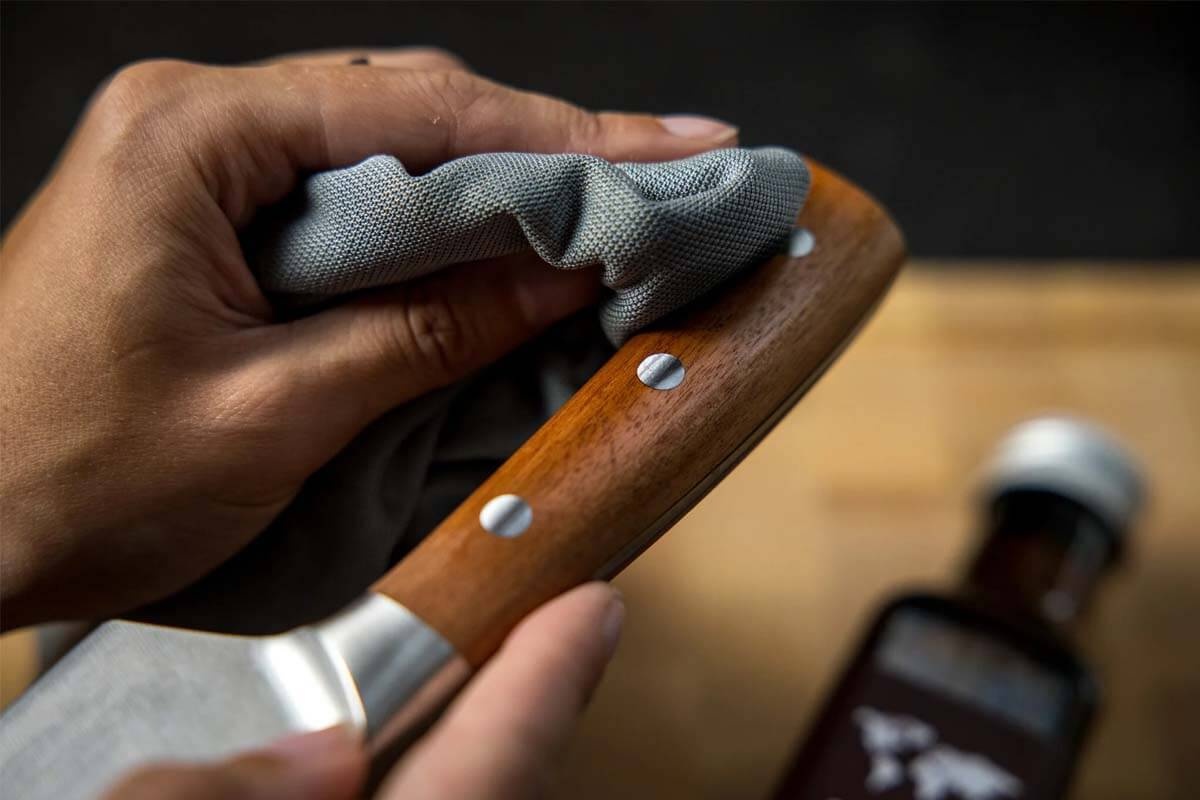Knives
A good knife is essential in any kitchen. With a sharp Skottsberg knife, you can cut effortlessly and safely. But even the best knives need care. By cleaning them properly, storing them safely and sharpening them regularly, they’ll remain a reliable kitchen tool for many years to come.
Discover the power of a sharp knife
A good knife determines how smoothly you cut and how much you enjoy cooking. With your Skottsberg knife, you hold true craftsmanship in your hands – and with the right care, it will last for years. Here you’ll learn how to clean, sharpen and store your knife safely. Want more tips? Visit our blog and knowledge center.

What you really need to know about your Skottsberg knife
When using your Skottsberg knife, there are four important moments: before use, during use, after use, and when sharpening and maintaining it. We’ve collected the most important tips to extend your knife’s lifespan and keep the blade razor-sharp. This way, your knife remains not only practical, but also a piece of craftsmanship you’ll enjoy every single day.
Before use
- Ready to use straight away
Your Skottsberg knife is razor-sharp and ready for immediate use. Carefully take it out of the packaging and feel the weight, the balance, and the grip of the handle. This helps you get to know your knife, making cutting easier and safer. - Protect the blade from the very first cut
Before you start, make sure your work surface is clean and stable. Avoid hard surfaces such as glass, stone or plastic, as these can easily damage the blade even before the first cut. All set? Then you’re ready to slice with precision and confidence.
During use
- Use a wooden cutting board
Always choose a wooden cutting board. Wood is durable and gentle on your knife. End-grain boards are especially ideal: the upright fibres absorb the impact of the blade and then close again, helping your knife stay sharp for longer. - Cutting technique and safety
Good technique makes cutting easier and safer. Use the pinch grip for control, and the claw technique to keep your fingers protected. Want to learn more? Read our blogs about chef’s knife grips and cutting techniques, and Santoku knife grips and cutting techniques.
After use / Cleaning
- Wash by hand
Clean your knife straight after use with warm water and a little mild washing-up liquid. Never put it in the dishwasher, as the wooden handle can easily get damaged. - Dry immediately
Dry the knife, including the handle, thoroughly straight away with a soft cloth. This prevents stains, rust and the wood from drying out. - Storage
Store your knife safely in a knife block, on a magnetic strip or in the sturdy wooden storage box that it originally came in. This keeps the blade well protected and sharper for longer.
Sharpening and maintenance
- Regular sharpening
A sharp knife is safer and more enjoyable to use. If you find you’re having to use more force or can’t slice through tomatoes smoothly anymore, it’s time to sharpen it. Use a whetstone, honing steel, or have it sharpened professionally. Maintain an angle of around 15–20° and move steadily along the stone or steel. For full instructions, see our sharpening guide. - Oiling the handle
To keep the wooden handle beautiful and long-lasting, occasionally apply a thin layer of Tung oil. Use a lint-free cloth to apply the oil, let it absorb for a few moments and wipe away any excess. This keeps the wood nourished and protected from moisture.
Complete your kitchen with Skottsberg
Now that you know how to care for your knife properly, cooking becomes even more enjoyable. Discover our collection of knives and choose the one that suits you best.







